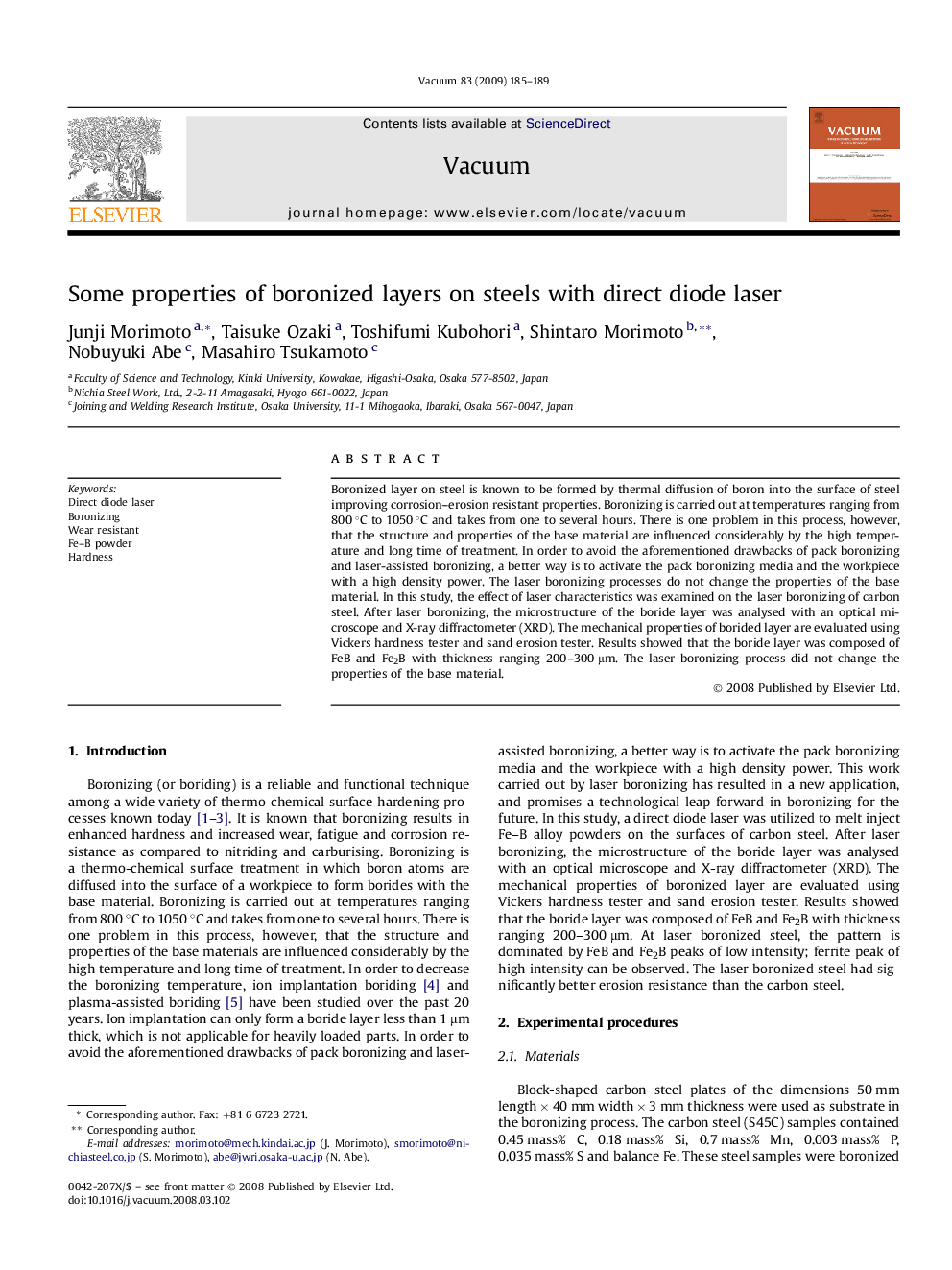| Article ID | Journal | Published Year | Pages | File Type |
|---|---|---|---|---|
| 1690148 | Vacuum | 2008 | 5 Pages |
Abstract
Boronized layer on steel is known to be formed by thermal diffusion of boron into the surface of steel improving corrosion-erosion resistant properties. Boronizing is carried out at temperatures ranging from 800 °C to 1050 °C and takes from one to several hours. There is one problem in this process, however, that the structure and properties of the base material are influenced considerably by the high temperature and long time of treatment. In order to avoid the aforementioned drawbacks of pack boronizing and laser-assisted boronizing, a better way is to activate the pack boronizing media and the workpiece with a high density power. The laser boronizing processes do not change the properties of the base material. In this study, the effect of laser characteristics was examined on the laser boronizing of carbon steel. After laser boronizing, the microstructure of the boride layer was analysed with an optical microscope and X-ray diffractometer (XRD). The mechanical properties of borided layer are evaluated using Vickers hardness tester and sand erosion tester. Results showed that the boride layer was composed of FeB and Fe2B with thickness ranging 200-300 μm. The laser boronizing process did not change the properties of the base material.
Keywords
Related Topics
Physical Sciences and Engineering
Materials Science
Surfaces, Coatings and Films
Authors
Junji Morimoto, Taisuke Ozaki, Toshifumi Kubohori, Shintaro Morimoto, Nobuyuki Abe, Masahiro Tsukamoto,
